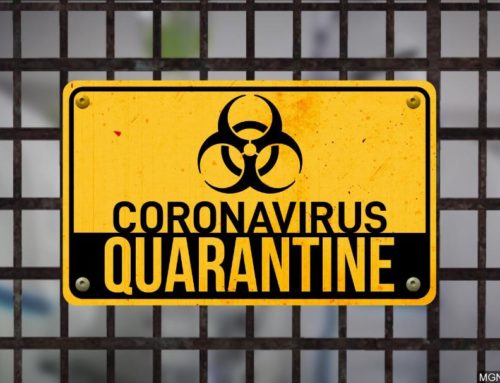Do you feel like you’ve been hearing more and more about Lyme disease and its potentially debilitating effects? You’d be correct. The statistics are pretty staggering and it can result in chronic symptoms that can have life altering impacts. The U.S. Centers for Disease Control and Prevention (CDC) reported that cases of tickborne diseases had more than doubled from 2004 to 2016, from 22,000 to 48,000, and that Lyme disease accounted for 82 percent of tickborne diseases. Due to underreporting, the actual number of Lyme disease cases is estimated to be significantly higher – likely more than 350,000 in 2016.
That’s a lot of tick bites. As we enter the spring and summer months, this is primetime to be at risk and the best time to educate yourself on protection.
Some Lyme 411:
- Lyme disease typically peaks in May through July, when the ticks that carry the disease are most active.
- More than 90 percent of Lyme cases pop up in the Northeast, Upper Midwest, and mid-Atlantic.
- Lyme season has been getting longer, since the geography in which ticks can thrive and survive has expanded.
- Lyme disease typically peaks in May through July, when the ticks that carry the disease are most active.
Some celebrities have recently brought their Lyme experiences into the spotlight to shed some light on how debilitating the symptoms can be:
- Singer Shaina Twain said earlier this year that a struggle with dysphonia, which left her temporarily unable to sing, was caused by Lyme disease.
- Pop star Avril Livigne was bedridden for five months after contracting Lyme disease.
- Pro golfer Jimmy Walker revealed in April that he was battling Lyme disease, and took a month off the PGA Tour as he recovered.
According to Vox.com, researchers have determined several reasons why Lyme is becoming more common:
- Changes in land use
- Hunting protections on deer
- Suburbanization
- Global warming
Let’s break down more info on Lyme with the help of Mayo Clinic:
Early signs and symptoms
A small, red bump, similar to the bump of a mosquito bite, often appears at the site of a tick bite or tick removal and resolves over a few days. This normal occurrence doesn’t indicate Lyme disease.
However, these signs and symptoms can occur within a month after you’ve been infected:
- From three to 30 days after an infected tick bite, an expanding red area might appear that sometimes clears in the center, forming a bull’s-eye pattern. The rash (erythema migrans) expands slowly over days and can spread to 12 inches (30 centimeters) across. It’s typically not itchy or painful but might feel warm to the touch. Erythema migrans is one of the hallmarks of Lyme disease, although not everyone with Lyme disease develops the rash.
- Other symptoms. Fever, chills, fatigue, body aches, headache, neck stiffness and swollen lymph nodes can accompany the rash.
Later signs and symptoms
If untreated, new signs and symptoms of Lyme infection might appear in the following weeks to months. These include:
- Erythema migrans. The rash may appear on other areas of your body.
- Joint pain. Bouts of severe joint pain and swelling are especially likely to affect your knees, but the pain can shift from one joint to another.
- Neurological problems. Weeks, months or even years after infection, you might develop inflammation of the membranes surrounding your brain (meningitis), temporary paralysis of one side of your face (Bell’s palsy), numbness or weakness in your limbs, and impaired muscle movement.
Less common signs and symptoms
Several weeks after infection, some people develop:
- Heart problems, such as an irregular heartbeat
- Eye inflammation
- Liver inflammation (hepatitis)
- Severe fatigue
Causes : The Deer Tick
In the United States, Lyme disease is caused by the bacteria Borrelia burgdorferi and Borrelia mayonii, carried primarily by black-legged or deer ticks. Young brown ticks often are no bigger than a poppy seed, which can make them nearly impossible to spot.
To contract Lyme disease, an infected deer tick must bite you. The bacteria enter your skin through the bite and eventually make their way into your bloodstream.
In most cases, to transmit Lyme disease, a deer tick must be attached for 36 to 48 hours. If you find an attached tick that looks swollen, it may have fed long enough to transmit bacteria. Removing the tick as soon as possible might prevent infection.
Risk factors
- Spending time in wooded or grassy areas.
- Having exposed skin.
- Not removing ticks promptly or properly.
Complications
Untreated Lyme disease can cause:
- Chronic joint inflammation (Lyme arthritis), particularly of the knee
- Neurological symptoms, such as facial palsy and neuropathy
- Cognitive defects, such as impaired memory
- Heart rhythm irregularities
Prevention
The best way to prevent Lyme disease is to avoid areas where deer ticks live, especially wooded, bushy areas with long grass.
Simple precautions:
- Cover up. When in wooded or grassy areas, wear shoes, long pants tucked into your socks, a long-sleeved shirt, a hat and gloves. Try to stick to trails and avoid walking through low bushes and long grass. Keep your dog on a leash.
- Use insect repellents. Apply insect repellent with a 20 percent or higher concentration of DEET to your skin. Parents should apply repellant to their children, avoiding their hands, eyes and mouth.
- Do your best to tick-proof your yard. Clear brush and leaves where ticks live. Mow your lawn regularly. Stack wood neatly in dry, sunny areas to discourage rodents that carry ticks.
- Check your clothing, yourself, your children and your pets for ticks. Be especially vigilant after spending time in wooded or grassy areas. It’s helpful to shower as soon as you come indoors.
- Don’t assume you’re immune. You can get Lyme disease more than once.
- Remove a tick as soon as possible with tweezers. Gently grasp the tick near its head or mouth. Don’t squeeze or crush the tick, but pull carefully and steadily. Once you’ve removed the entire tick, dispose of it by putting it in alcohol or flushing it down the toilet, and apply antiseptic to the bite area.
Other tick questions answered:
Compared to other infections, is Lyme disease more difficult to detect and diagnose?
It’s difficult because the Borrelia burgdorferi very rapidly leaves the blood and disseminates into the lymph nodes and into tissues. As a result, blood tests for early Lyme disease have low sensitivity.
Why is it important to accurately diagnose Lyme disease?
Timely and accurate diagnosis of Lyme disease can help prevent potential complications, which include encephalitis, a brain infection; myocarditis, a heart infection; or endocarditis, a heart valve infection.
Is it true that it takes at least 24 hours for a tick to transmit Lyme disease to you?
Yes, this is true. The CDC recommends that patients who notice the tick and remove it within 24 hours do not need antibiotic prophylaxis with doxycycline to prevent Lyme disease transmission. The tick typically needs to be on you, basically sucking your blood and attached to you for 36 to 48 hours, during which the Borrelia burgdorferi migrates from the tick gut to its salivary glands, before it can transmit the Lyme pathogen.
What is currently the best standard of care for treatment of Lyme disease?
The standard of care for early uncomplicated Lyme disease recommended by the CDC is 10 to 21 days of doxycycline, which is an oral antibiotic that you take twice a day. Patients admitted to the hospital with severe complications of disseminated Lyme disease, such as meningitis or endocarditis, typically receive a two- to four-week course of an intravenous antibiotic such as ceftriaxone.
If you get Lyme disease once, can you get it again?
Yes, you can.
Lyme Disease is complicated and tricky. By taking the suggested precautions, you can potentially save yourself and your loved ones from a potentially harmful illness. Stay safe!
https://www.mayoclinic.org/
https://www.ncbi.nlm.nih.gov/
https://www.vox.com
https://www.healthline.com






